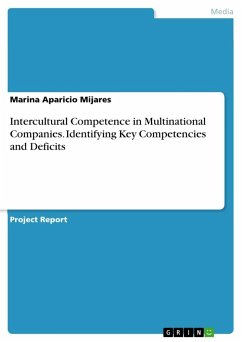
Chinese management and communication principles - Intercultural competence as prerequisite for business success

PAYBACK Punkte
0 °P sammeln!
Seminar paper from the year 2010 in the subject Communications - Intercultural Communication, grade: 2,0, University of applied sciences, Marl, language: English, abstract: 1. Introduction1.1. ProblemGlobalization is an ongoing process by which regional economies have become integratedthrough a global network of communication and trade, which simultaneouslyinduces "globalization of culture".In an attempt to explain culture more clearly, the "Iceberg Model of Culture" can beused2 since culture is often compared to an iceberg which has both visible (on the surface)and invisible (below the surfac...
Seminar paper from the year 2010 in the subject Communications - Intercultural Communication, grade: 2,0, University of applied sciences, Marl, language: English, abstract: 1. Introduction1.1. ProblemGlobalization is an ongoing process by which regional economies have become integratedthrough a global network of communication and trade, which simultaneouslyinduces "globalization of culture".In an attempt to explain culture more clearly, the "Iceberg Model of Culture" can beused2 since culture is often compared to an iceberg which has both visible (on the surface)and invisible (below the surface) parts.Visible elements of culture - the "percepta"- can be seen, such as food, clothing or laws.Those elements which are not as obvious -the "concepta" - such as norms, values or beliefs are represented by the much largerportion of the iceberg underwater.In a course of increasing cross-cultural business encounters, the question arouseswhether it is necessary to be acquainted with both thevisible and the greater invisiblepart of the culture concerned - i.e. to possess intercultural competence - in order to gaininternational business success.1.2. ObjectivesWith reference to Hofstede's Dimensions of National Culture, this seminar paper hasthe intention to verify the close correlation between intercultural competence and internationalbusiness success.In this context, it makes an attempt to visualize the "invisible" part of culture by theexample of China, which gains a steadily increasing importance for the world economicgrowth shown by its gross domestic product real growth rate of 8.7 % est. in 20096, thusattracting more and more companies from all over the world to establish business inChina.













